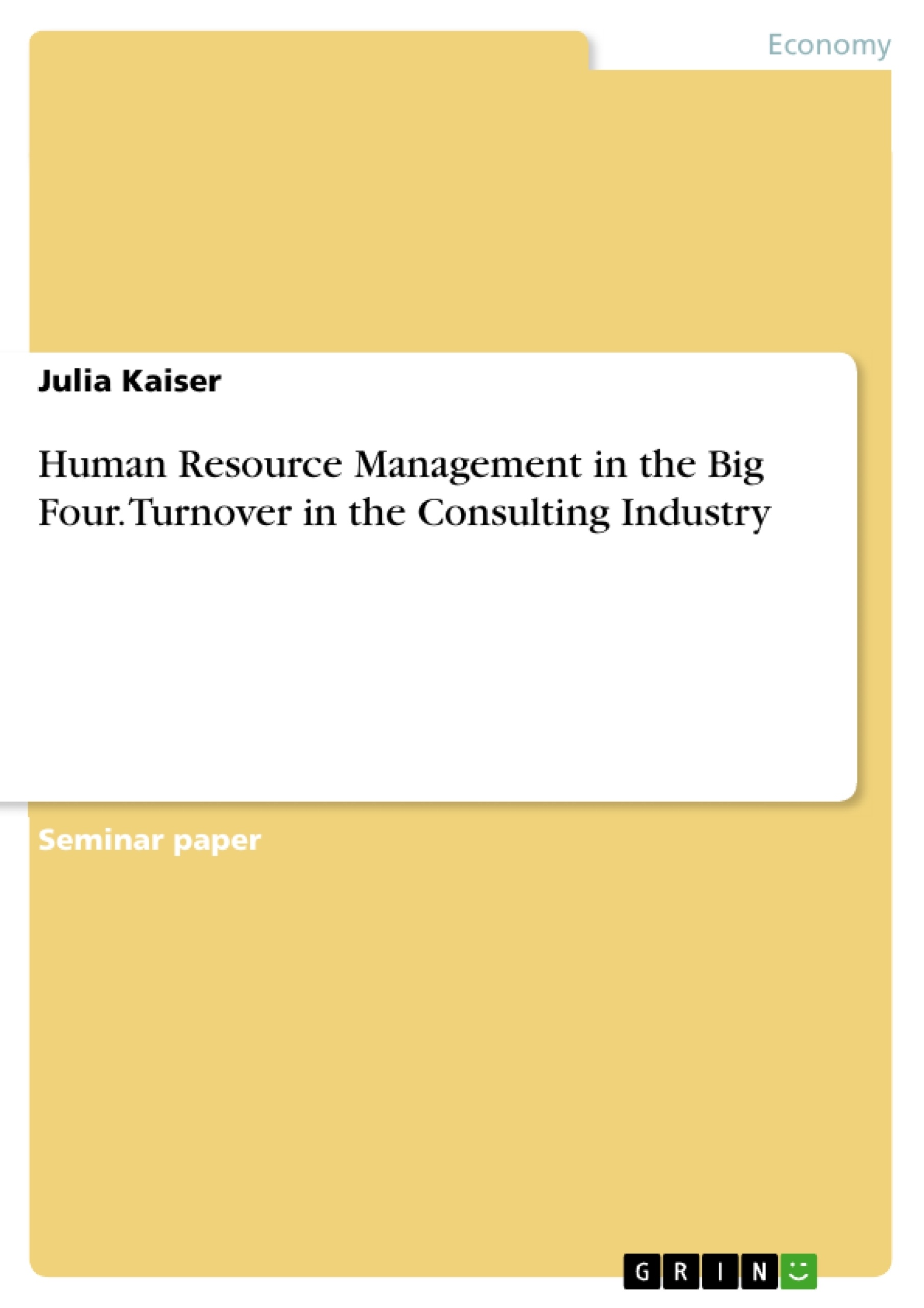Employees are a company's greatest asset and competitive advantage. However, the consulting industry, represented by its flagship companies PWC, EY, KPMG and Deloitte, is facing a major turnover problem during recent years with annual rates between 15 and 20 per cent. This paper investigates two of the major causes for this development; the ‘Meatgrinder Problem’ and the ‘Kickstart Problem’, which form a vicious cycle. Therefore, it is necessary to evaluate whether the industries’ current employee retention mechanisms are sufficient to break the cycle of the two interacting causes for turnover.
Summing up the main components associated with the cost of turnover, the Saratoga Institute estimates the average cost of turnover to one time the annual salary of a worker. However, not all kinds of turnover are necessarily detrimental. According to Abelson & Baysinger (1984), some degree of turnover can have positive consequences for organizations like better person-job matches and staffing flexibility. On the other hand, dysfunctional turnover is the voluntary separation of employees whom the organization prefers to retain since these employees have made positive contributions to the organization and, by leaving, detract from overall effectiveness.
Table of Contents
- The Twofold Problem
- Where does the Turnover come from?
- The meatgrinder problem.
- The kickstart problem.
- Current Retention strategies
Objectives and Key Themes
This paper investigates the causes of high employee turnover in the consulting industry, focusing on the 'Meatgrinder Problem' and the 'Kickstart Problem'. It explores whether current retention mechanisms are effective in addressing these interconnected issues and the impact of high turnover on organizational effectiveness.
- The 'Meatgrinder Problem' – High job demands and their impact on employee well-being
- The 'Kickstart Problem' – The use of consulting firms as a stepping stone for career advancement
- Employee retention strategies in the consulting industry
- The impact of turnover on organizational effectiveness
- The influence of organizational structure and culture on employee turnover
Chapter Summaries
The first chapter establishes the context for the paper by outlining the high turnover rates in the consulting industry and the associated costs. It introduces the two main problems: 'Meatgrinder Problem' and 'Kickstart Problem', which contribute to the high turnover rate.
The second chapter focuses on the 'Meatgrinder Problem', exploring the high job demands and the subsequent negative impact on employee well-being. It analyzes the sources of strain and their contribution to both organic and structured churn. The chapter also highlights the role of job resources in mitigating the negative effects of high job demands.
The third chapter examines the 'Kickstart Problem', describing the use of consulting firms as a stepping stone for career advancement by young professionals. The chapter discusses the impact of this phenomenon on organizational retention and the challenge of constructing careers for employees who seek specialization in specific industries.
The fourth chapter delves into current retention strategies employed by consulting firms, including promotions, training, and monetary rewards. The chapter analyzes the effectiveness of these strategies in addressing the 'Meatgrinder Problem' and the 'Kickstart Problem'. It also explores more progressive approaches to retention, such as flexible work programs and retraining initiatives.
Keywords
The paper focuses on the 'Meatgrinder Problem' and the 'Kickstart Problem' as contributing factors to high turnover rates in the consulting industry. It explores the impact of job demands, work-life balance, and organizational culture on employee retention. Key concepts include organic churn, structured churn, job demands-resources model, promotion models, leadership training, and monetary incentives.
- Quote paper
- Julia Kaiser (Author), 2019, Human Resource Management in the Big Four. Turnover in the Consulting Industry, Munich, GRIN Verlag, https://www.grin.com/document/1030655



